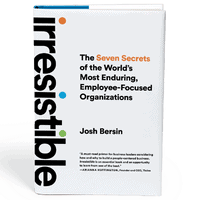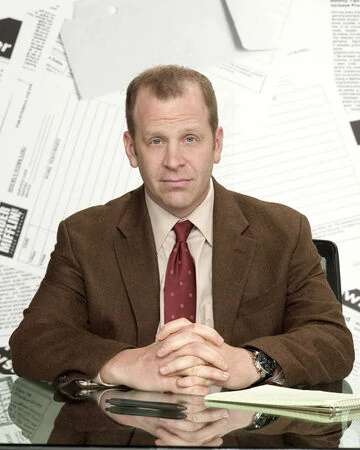Labor Shortage In The Middle Of A Business Slowdown? It All Makes Sense.
Why do we have a labor shortage as we enter an economic slowdown? It’s an interesting paradox.
For the first time I can remember we’re entering a global economic slowdown yet the unemployment rate has dropped to the lowest it’s been in 53 years (3.4%) There is a shortage of people to take the jobs we have, and even though revenue and profits are slowing, companies continue to hire. It doesn’t make any sense, does it?
Well, it does.
If you look at the labor supply, as all the evidence shows, the number of workers (and I mean number of human beings) is not going up. In fact, China’s population is shrinking, the United States population is not growing significantly, Baby Boomers are retiriing, and many millennial and Gen Z workers have decided to either work part time, quietly quit or work in gig work.
All of the developed economies, including Germany, the UK, Northern Europe, and many of the countries in South America are suffering from a low birth rate. So there simply aren’t enough young people entering the workforce in the United States. Today only about 62% of eligible workers have decided to work and that number has not gone up since the pandemic. And there were a whole variety of reasons for this.
One could argue that it might be pessimism. It might be the aging population in general. And it might simply be that employers have not been doing a very good job of creating good and meaningful work that people want to do. (New Qualtrics research shows that only 39% of employees believe their job is meeting their expectations, and 43% are unhappy with their pay.) So employees, workers, are jumping around from job to job as fast as they can to make more money and get away from situations they don’t like (the “quit rate” is 2.7% per month).
Our latest research on healthcare shows that upwards of 50 to 60% of the nurses in many hospitals are deciding to leave and we see the same thing happening in retail, transportation and other industries. Chipotle, for example, has a turnover rate of almost 200%. So in some sense this is a wake up call for every employer in the world: if you don’t take care of your people, you’re simply going to have a labor shortage. And that means your company will not be able to grow at the rate you had predicted.
Now, there are many other ways to grow a business. As I talked about in my last article, you don’t have to hire more people to grow. You can make the company more productive. You can shut down underperforming operations. You can automate or streamline the work you’re doing and use AI and other tools to scale. But you do have to hire people to get started. And so one could argue that one of the reasons for the economic slowdown is a lack of workers, despite the fact that we’re laying people off. And I know that if you’re in retail or hospitality or even running an airline and you’re having a hard time hiring, you’re not going to grow your business.
For those of us who work in the Human Resources profession, this is something we understand very well: the quality of labor or the quality of work is intimately, perhaps entirely, dependent on the quality of your employee experience. And “employee experience” is not just a nice thing to work on, it has now become a business imperative.
If you’re not making people more productive, giving them opportunities to grow, paying them fairly, leading them in an unbiased way, giving them a safe workplace, creating a psychologically safe workplace and inspiring them with your mission… well, they’re not going to hang around. So that’s what the numbers are saying.
And while we’ve been worried about the slowdown and the recession that might be coming, this urgent people issue has not gone away for a decade. Even in the growing economy companies were worried about attracting and retaining workers.
Well, it’s still a problem. And it’s still something we have to focus on.
What Is The Solution?
Now let me talk about what we should do. And I hate to keep plugging my book Irresistible, but in many ways, it’s all about this problem.
 The biggest economic trend that has taken place for the last 40 years is the shift in economic value from raw materials and resources to human capital. With the exception of oil companies, and companies that primarily produce commodity products, which is a relatively small part of the economy, most companies add value through labor.
The biggest economic trend that has taken place for the last 40 years is the shift in economic value from raw materials and resources to human capital. With the exception of oil companies, and companies that primarily produce commodity products, which is a relatively small part of the economy, most companies add value through labor.
In other words, those of us who are truck drivers, delivery people, retail workers, nurses, software engineers, designers, and consultants: we are the product that your company sells. Every human being, in his or her own unique way, is adding value to the product and service.
You know this if you’ve flown on a plane; you know this if you’ve been to a hotel; you know this if you’ve gone to a retail store; you know this if you’ve gone to a hospital. You may not know it if you go to the gas station but there’s actually a lot of human capital involved in the energy industry too. Those companies are filled with some of the most complex people problems you can imagine.
So, if this new data is a sign of a continued shortage of labor, we have to spend a lot of time thinking about the human capital strategies in our companies.
My book Irresistible is all about this. And it’s a book about two things, management and human resources. You might consider them to be very different topics, but they’re not. They’re related. The human resources professionals that I work with are studying and improving and innovating in management practices all the time. And those of you that are not in human resources are probably thinking about it too. So let me give you a couple of tips.
Number one: don’t hire people that don’t fit your company’s culture and don’t hire people ahead of revenue just to grow. Every human being you hire changes your company. People don’t become the company, the company becomes the people. And think about that before you rush out and open 10 headcount to hire a bunch of salespeople.
Number two, focus on the organization design. Many of the companies I talked with in the last several weeks are laying off people in a somewhat random fashion. That may be a necessity for Wall Street, but it probably isn’t a good idea for the long run.
You can decide how many middle managers you want to have, how many layers, how many duplicative job titles, and how to focus teams are on the most important projects at hand. Don’t leave that up to each line manager, because the line managers don’t have the perspective to make those strategic decisions. This is the job of senior leadership coupled with HR.
For example, we have an interesting case study of how Bosch Power Tools completely redesigned the organization structure to sell building products. Rather than organize around product lines, they organized around customer needs. As a result of this change they were able to double or triple their margin and revenue per employee without hiring a single person. You can think this way too.
Number three, think about what you really offer to employees. Many call it “the deal.” What is the real value of coming to work in the jobs that you create? Is it the hourly wage? Is the culture? Is it the opportunity to add value to people’s lives? Is it the growth and career opportunities? Or perhaps it’s just the big payola? I don’t care what it is, but tell people what it is and be clear about it. So you’ll attract people that want that thing.
Many hospitals are mission driven organizations and they get plenty of employees who love to work in healthcare because they honestly want to help other people. That’s not always true in investment banks, which have a more cut-throat approach to employment brand. And I think the struggle that Goldman Sachs is going through has a lot to do with this issue. What is the value proposition of going to work for Goldman’s consumer business when when making a ton of money is not necessarily the result. As the Economist points out, they’ve got a conflict in their value proposition.
Number four, look at internal mobility and the role of middle management. You cannot run a company today with a churn and burn attitude to people. You can’t hire the first person you find, nor can you spend months looking for the “purple squirrel” who will be the world’s best fit. In this labor market it will take too long and cost too much money. You have to promote people internally. You have to move people around. And managers have to look at their job as a combination of delivering on results and also building the skills and capabilities of their people. That is the job of a manager and I discuss it heavily in the book, as well as how to do this across the enterprise. And there are many, many examples of this in our research.
And that includes lifting people up from low level jobs to more senior positions, using the innovations of Career Pathways. Career Pathways enable people to educate themselves and find new careers within your company. I firmly believe that you will not survive if you don’t do this yourself because the economy is not going to do it for you.
The final thing I’ll mention is the issue of investing in human capital and HR in general.
 Most of us remember the days when you’d watch shows like The Office and laugh at the Human Resources Manager and what a goofy person that was.
Most of us remember the days when you’d watch shows like The Office and laugh at the Human Resources Manager and what a goofy person that was.
Those days are over.
Those of you who work in HR people are now in very strategic jobs. You’re not here to just run the payroll and mandate compliance. You are here to help your business counterparts strategize, build, and grow the underlying infrastructure of the company, which in many ways is people.
This is why I wrote about People Sustainability in our 2023 Predictions report. Your Chief Sustainability Officer should not only worry about global warming and carbon footprint. He or she should be worrying about the people issues in your company too.
Topics like pay equity, diversity, inclusion, fair wages, safety, human rights, and flexible work are sustainability issues for your company. If your retention rate is low, and 60 to 70 to 80% of your people leave every year, you are going to incur a massive cost that you don’t need to pay. And not only will it cost you money, but your culture and customer service will feel it too. So sustainability of your people and your people practices are now just as important as the electricity that runs in your factories and the cash you have in the bank. These are issues of business risk, and that means your board has to understand this, your investors need to understand this and every manager needs to understand this.
The labor shortage is not a new problem. We have been watching the growth in value of human capital for decades: talking about it, writing about it, reading economic reports on it. Now, driven by the latest headlines, it is becoming painfully clear that the companies that invest in their people will be the companies that thrive in the decades ahead.
Additional Information
Predictions for 2023: Redefining Work, The Workforce, And HR
Were All These Layoffs Inevitable? Perhaps, But Here’s How It Happened.
Irresistible: The Seven Secrets of the World’s Most Enduring, Employee-Focused Organizations

